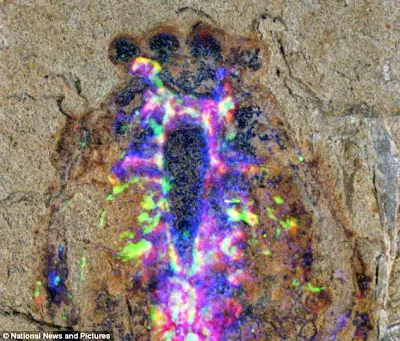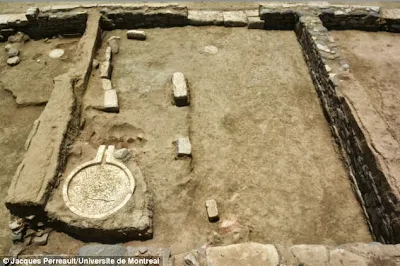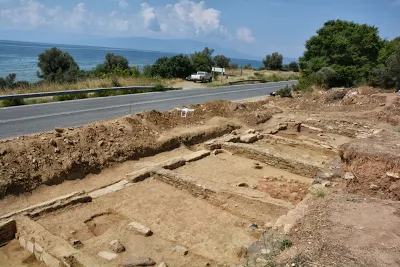«Essence
of elephants» του Γκρεγκ ντυ Τουά, η νικήτρια φωτογραφία του διαγωνισμού
Wildlife Photographer of the Year 2013. The overall winner
of the 2013 Wildlife Photographer of the Year is Greg du Toit (South Africa)
for his photo Essence of Elephants. He said: "I’ve wanted to create an
image that captures their special energy and the state of consciousness that I
sense when I’m with them. This image comes closest to doing that." © Greg
du Toit/ Wildlife Photographer of the Year
Ένα
«μυστηριακό» όπως το χαρακτήρισαν οι κριτές πορτρέτο αφρικανικών ελεφάντων από
τον νοτιοαφρικανό φωτογράφο Γκρεγκ ντυ Τουά απέσπασε το πρώτο βραβείο του
Wildlife Photographer of the Year 2013, του σημαντικότερου ίσως διαγωνισμού
φωτογραφίας της άγριας ζωής που διοργανώνεται από το Μουσείο Φυσικής Ιστορίας
του Λονδίνου και το BBC Worldwide. Το «Essence
of elephants» επελέγη από διεθνή κριτική επιτροπή ανάμεσα σε 43.000
φωτογραφίες από όλο τον κόσμο.
«Mother's little
headful», του Ουαντάγιαν Ράο Παουάρ, βραβείο Youth Photographer of the Year
2013. Fourteen year-old Udayan Rao Pawar (India) is junior overall winner for a
nesting colony of gharial crocodiles. "I could hear them making little
grunting sounds," he said. "Very soon a large female surfaced near
the shore, checking on her charges. Some of the hatchlings swam to her and
climbed onto her head. Perhaps it made them feel safe." It turned out that
she was the chief female of the group, looking after all the hatchlings.
Το
«Mother’s little heedful», ένα «οικογενειακό ενσταντανέ» κροκοδείλων από τον 14χρονο Ουντάγιαν Ράο Παουάρ από την Ινδία κέρδισε το βραβείο Youth
Photographer of the Year 2013.
Isak Pretorius
(South Africa) is winner of the Behaviour Birds category. He captured this
lesser noddy caught in a colossal spider's net on the Seychelles island. He
explained that it was "a bit of an eerie picture because the bird is still
alive, you can see the pain and the inevitable story that’s evolving. It
strikes an emotional chord". Even if they struggle free, the silk clogs up
their feathers so they can’t fly.

Harvest gold: Late
one July evening, walking slowly along the edge of a wheat field near his
village – Cousset, in Switzerland – looking for subjects to photograph, Etienne
noticed ‘a little ball’ stuck to an ear of wheat. ‘To my surprise,’ says
Etienne, ‘it was a harvest mouse, nibbling the grain.’ Etienne approached until
he was a few metres away and managed to photograph the tiny mouse at various
angles before it scuttled back down the wheat stalk. ‘The meeting was brief but
extraordinary,’ he adds. ‘This was my favourite out of all the portraits,’
showing it eating, its prehensile tail helping it to balance. Picture: Etienne
Francey

Sharing a shower: Scientists
have long thought that the main reason that lions band together is to hunt –
that food, essentially, is the evolutionary force behind their social bonds.
Recently, though, it has emerged that the close bonds between males are moulded
by another pressure: the actions of mutual rivals. C-Boy, a black-maned male
lion, and his coalition partner Hildur, once controlled a superior territory in
Tanzania’s Serengeti National Park, but they were deposed by a squad of four
males known to researchers as the Killers. Nick came across C-boy and Hildur hunkered
down in the rain. Though he had spent many months photographing Serengeti
lions, he had spent most of his time with larger prides of females. ‘I had
never before seen these two senior coalition males together,’ he says. They
were used to the car that Nick was in, so he was able to use a simple zoom lens
and ambient light. The rain isn’t as unwelcome as their expressions suggest:
when water is scarce, the closely bonded pair lick drops from their own and
each other’s fur. Picture: Michael Nichols/NATIONAL GEOGRAPHIC

Magic mushrooms: The
taller of these two parasol mushrooms is just 30 centimetres. That is tall for
a parasol, but their prominence against the tree trunks behind is a slight
optical illusion, the result of a double exposure, in-camera. Agorastos found
the fungi growing in woodland in the Grevena region of Greece, and was
fascinated by the subtle browns of the scales of their ‘skins’ and their
relationship to each other. Photographing them from ground level, he chose to
expose separately for the young spruce trees, using their trunks as a frame for
the emerging fruiting bodies, and to set them against the backdrop of light
coming through the autumn leaves at the woodland edge. What he wanted to
capture was the fairytale feel of the scene. ‘Nature is the true designer,’ he
says. Picture: Agorastos Papatsanis

Cold-blooded
killing: Corcovado National Park, on the Pacific coast of Costa Rica, is
accessible only by boat or aircraft. Early one morning, Alejandro heard there
were bull sharks near the beach and set off to look for them. It wasn’t long
before he heard a very loud noise – splashing and a hammering sound. Out of the
sea came a huge crocodile with a large green turtle in its mouth, which was
flapping its flippers and opening and closing its eyes. ‘With a fast movement,
the crocodile held the turtle by its flipper,’ says Alejandro, ‘and then, with
a flick of its jaws, grabbed the still-living reptile by its head. I willed the
crocodile to be still for a moment, while I struggled to keep the camera
steady.’ He managed just one shot before the crocodile headed for the sea and
the mouth of the river, clutching its strange prey. Picture: Alejandro Prieto

Pearls of spring: Each
year Solvin marks the end of winter by going into the field to photograph toads
emerging from hibernation and migrating to their breeding ponds. This time he
went to Solling, in western Germany, a wildlife haven with both forests and
wetlands. As the ponds began to boil with mating toads, he chose his location
and carefully lowered his camera and strobes into the water, trying to avoid
disturbing either the toads or the muddy bottom. By linking his camera to his
laptop with a special USB wire, he could see all the activity below the surface
and take intimate, non-invasive pictures. ‘To me the toadspawn looks like
threaded black pearls,’ says Solvin, ‘neatly arranged in the scenery.’ He was
captivated by the event, as he has been since childhood, and rejoiced in the
spring sunlight and the sounds of frogs, toads and running water – ‘all somehow
reassuring after the long winter’. Picture: Solvin Zankl

Sockeye catch: Each
year between July and September, millions of sockeye salmon migrate from the
Pacific back up rivers to the fresh waters of Lake Kuril, to spawn in the waters
where they were born. This volcanic crater lake, in the South Kamchatka
Sanctuary in the Russian Far East, is the largest sockeye salmon spawning
ground in Eurasia. The annual glut attracts Kamchatka brown bears from the
surrounding forests to feast on the fish and fatten up for hibernation.
Following the example of the bears, Valter waded into the icy water to get the
right perspective and to wait for an action moment – a real test of physical
endurance. By doing so, ‘I almost became one of them,’ and ‘in the silence of
the Garden of Eden I did not think about anything else.’ This bear reared up
some three metres on its hind legs and scanned the water for fish. Suddenly it
pounced on a female salmon swollen with roe, the force sending a string of
crimson eggs spinning out of her body. Picture: Valter Bernardeschi

Eye of a toad: Early
spring sees a pond near Łukasz’s home city of Warsaw, Poland, full of mating
frogs and a few toads. On this March day, Łukasz shared the pond with them for
an evening, sitting in the icy water in his chest-high waders, keeping as still
as possible, despite the numbing cold, so that the amphibians could get used to
him. ‘I wanted to find a fresh way of portraying the amphibians,’ he says, ‘at
water level.’ Using a telephoto lens, he focused on one lone toad and waited
for the sun to dip almost below the horizon before pressing the shutter, using
flash to bring out the details in the shadow. His prize was ‘the glorious pool
of sunset colour’ and fiery glow of the toad’s eye. Picture: Lukasz Bozycki
'The Water Bear'.
Paul Souders/Wildlife Photographer of the Year
'The Spat'. Joe McDonald/Wildlife
Photographer of the Year
'Lucky Pounce'.
Connor Stefanison/Wildlife Photographer of the Year
'The Cauldron'.
Sergey Gorshkov/Wildlife Photographer of the Year
Οι
δυο φωτογραφίες κρίθηκαν οι καλύτερες από τις «νικήτριες» 18 διαφορετικών
κατηγοριών οι οποίες συλλαμβάνουν τη φύση σε διάφορες στιγμές της,
απεικονίζοντας από τη συμπεριφορά των ζώων ως εντυπωσιακά τοπία. Μαζί με άλλες
εικόνες που ξεχώρισαν ανάμεσα στις υποψηφιότητες αποτελούν το αντικείμενο
έκθεσης η οποία παρουσιάζεται στο Μουσείο Φυσικής Ιστορίας του Λονδίνου (18
Οκτωβρίου 2013 – 23 Μαρτίου 2014) και θα ταξιδέψει στη συνέχεια σε πολλές χώρες
του κόσμου.


















.jpg)

























